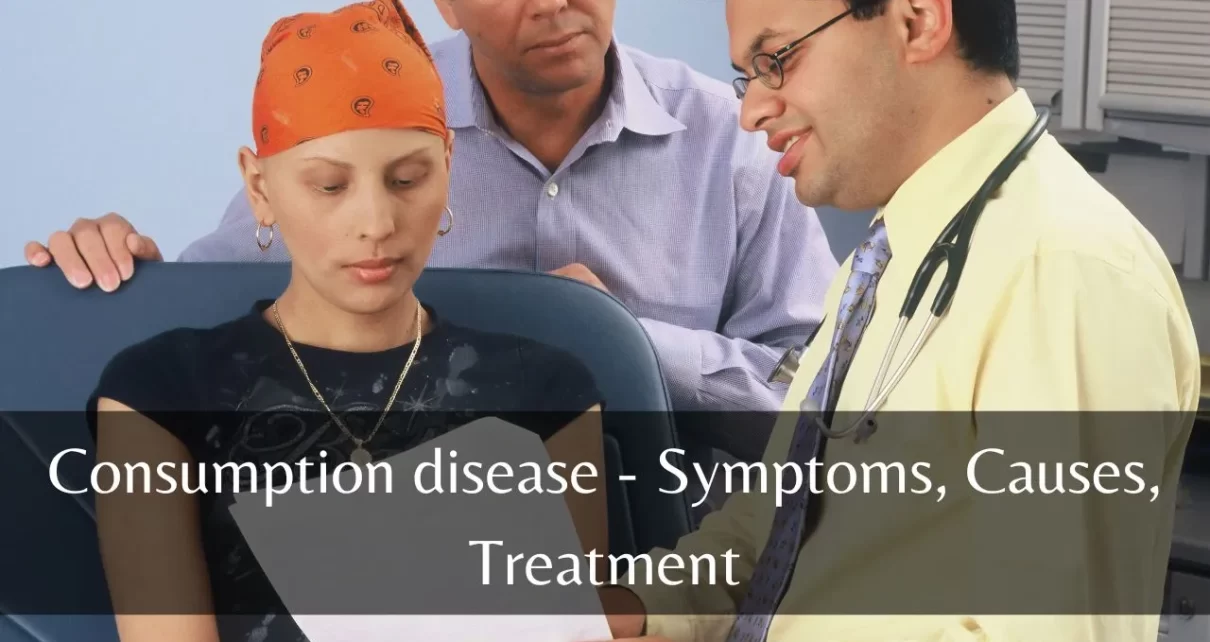Consumption disease, more commonly known as tuberculosis (TB), is a highly contagious bacterial infection that primarily affects the lungs but can also impact other organs in the body. Caused by the bacterium Mycobacterium tuberculosis, this disease has been a persistent and deadly global health challenge throughout human history.
Despite significant advancements in medicine and public health, tuberculosis continues to be a major cause of morbidity and mortality worldwide, particularly in developing countries. This article aims to provide a comprehensive overview of consumption disease, discussing its causes, transmission, symptoms, diagnosis, treatment, and prevention strategies, as well as its impact on global health.
What is the history of consumption disease (tuberculosis)?
Table of Contents
The history of consumption disease, or tuberculosis (TB), dates back thousands of years, with evidence of the disease found in ancient Egyptian mummies and in bones from prehistoric human settlements. The term “consumption” was used to describe the disease due to the severe weight loss and the wasting away of the body experienced by those afflicted.
The name “tuberculosis” was introduced in the early 19th century, derived from the Latin word “tuberculum,” which means a small swelling or nodule.
In 1882, the German physician and microbiologist Robert Koch discovered the bacterium Mycobacterium tuberculosis as the causative agent of the disease. This discovery laid the foundation for understanding its transmission and for developing diagnostic techniques and treatments.
In the early 20th century, the development of sanatoriums provided a space for patients to receive care and be isolated from the general population to prevent the spread of the disease. This approach, combined with improved living conditions, better nutrition, and public health measures, led to a significant decline in TB cases in developed countries.
The introduction of antibiotics, such as streptomycin in 1944 and isoniazid in 1952, revolutionised the treatment of tuberculosis, providing effective therapies to combat the disease. However, the emergence of drug-resistant strains of TB in recent decades has posed new challenges in its control and treatment.
In 1993, the World Health Organization (WHO) declared tuberculosis a global public health emergency, emphasising the need for increased efforts in prevention, diagnosis, and treatment. The development of the directly observed therapy, short-course (DOTS) strategy, and the subsequent End TB Strategy have been essential in the ongoing global fight against tuberculosis.
Symptoms of consumption disease (tuberculosis)?
The symptoms of consumption disease, or tuberculosis (TB), can vary depending on whether the infection is latent or active, and whether it affects the lungs (pulmonary TB) or other organs (extrapulmonary TB).
In latent TB, the infected individual does not exhibit any symptoms and is not contagious. However, the bacteria remain dormant in the body and can become active later, especially if the immune system becomes compromised.
In active pulmonary TB, the symptoms may include:
- Persistent cough lasting for three weeks or longer
- Coughing up blood or mucus (hemoptysis)
- Chest pain or pain while breathing or coughing
- Unexplained weight loss
- Fatigue or weakness
- Fever and chills
- Night sweats
Extrapulmonary TB occurs when the infection spreads to other organs or systems in the body. The symptoms can vary depending on the organ or system affected but may include:
- Swollen lymph nodes (lymphadenitis)
- Abdominal pain (if the gastrointestinal system is affected)
- Headaches, seizures, or neurological deficits (if the central nervous system is affected)
- Pain or swelling in the affected joint or bone
How is consumption disease (tuberculosis) transmitted?
Consumption disease (tuberculosis or TB) is primarily transmitted through the air. When a person with active TB of the lungs or throat coughs, sneezes, talks, or sings, they release tiny droplets containing Mycobacterium tuberculosis, the bacteria responsible for the disease. These droplets can be inhaled by people nearby, who may then become infected.
Close and prolonged contact with an individual with active TB increases the risk of transmission. Family members, friends, and coworkers are often at a higher risk of contracting the disease due to their proximity to the infected person. However, tuberculosis is generally not spread through brief or casual contact, and it is not transmitted through touch, sharing food or drink, or kissing.
What are the risk factors for contracting tuberculosis?
Several risk factors can increase an individual’s susceptibility to contracting tuberculosis (TB). These risk factors include:
Close contact with infected individuals
Prolonged or frequent exposure to someone with active TB increases the risk of infection, especially in household members, friends, or coworkers.
Weakened immune system
People with compromised immune systems are more susceptible to TB infection and progression to active disease. Conditions that can weaken the immune system include HIV/AIDS, diabetes, malnutrition, kidney disease, or cancer. Certain medications, such as corticosteroids or drugs for autoimmune diseases, can also impair the immune system.
Living or travelling in high-risk areas
TB is more prevalent in certain regions, including parts of sub-Saharan Africa, India, China, Russia, and some countries in Eastern Europe and Central Asia. Living in or travelling to these areas increases the risk of exposure.
Working or living in congregate settings
People in settings where they are in close contact with others, such as healthcare workers, prison staff, and residents of long-term care facilities, are at a higher risk of exposure to TB.
Substance abuse
The use of tobacco, alcohol, or illicit drugs can weaken the immune system and increase the risk of TB infection and progression.
Poor nutrition
Malnutrition can compromise the immune system, making an individual more susceptible to TB infection and progression to active disease.
What is the Treatment for consumption disease?
Tuberculosis, also known as consumption disease, is a bacterial infection caused by Mycobacterium tuberculosis. The treatment for tuberculosis typically involves a combination of medications called anti-tuberculosis drugs, which are prescribed for a minimum of six months to two years, depending on the severity of the infection.
The most commonly used medications for tuberculosis include:
- Isoniazid (INH)
- Rifampin (RIF)
- Ethambutol (EMB)
- Pyrazinamide (PZA)
In addition to medication, individuals with tuberculosis may also need supportive care such as adequate nutrition and rest, and in severe cases, hospitalization may be required. It is also important to take steps to prevent the spread of tuberculosis to others, such as covering the mouth and nose when coughing or sneezing and avoiding close contact with others until the infection is no longer contagious.
FAQ
Q1: How is tuberculosis transmitted?
Ans: Tuberculosis is primarily transmitted through the air when an infected person coughs or sneezes, releasing droplets containing the tuberculosis bacteria into the air. Inhaling these droplets can lead to infection.
Q2: How is tuberculosis diagnosed?
Ans: Tuberculosis can be diagnosed through a variety of tests, including a tuberculin skin test, chest X-ray, and sputum culture. A physical exam and medical history can also help in the diagnosis.
Q3: Who is at risk for tuberculosis?
Ans: People at increased risk of tuberculosis include those with weakened immune systems, such as those with HIV/AIDS, and those living in crowded or poorly ventilated conditions. Travellers to areas with high rates of tuberculosis are also at increased risk.
Q4: Can tuberculosis be cured?
Ans: Yes, tuberculosis can be cured with appropriate treatment, which typically involves a combination of antibiotics taken for several months. It is important to complete the full course of treatment to prevent the development of drug-resistant tuberculosis.
Q5: How can tuberculosis be prevented?
Ans: Preventing tuberculosis involves several strategies, including identifying and treating infected individuals, improving living conditions and ventilation in high-risk settings, and vaccinating high-risk populations with the BCG vaccine.



